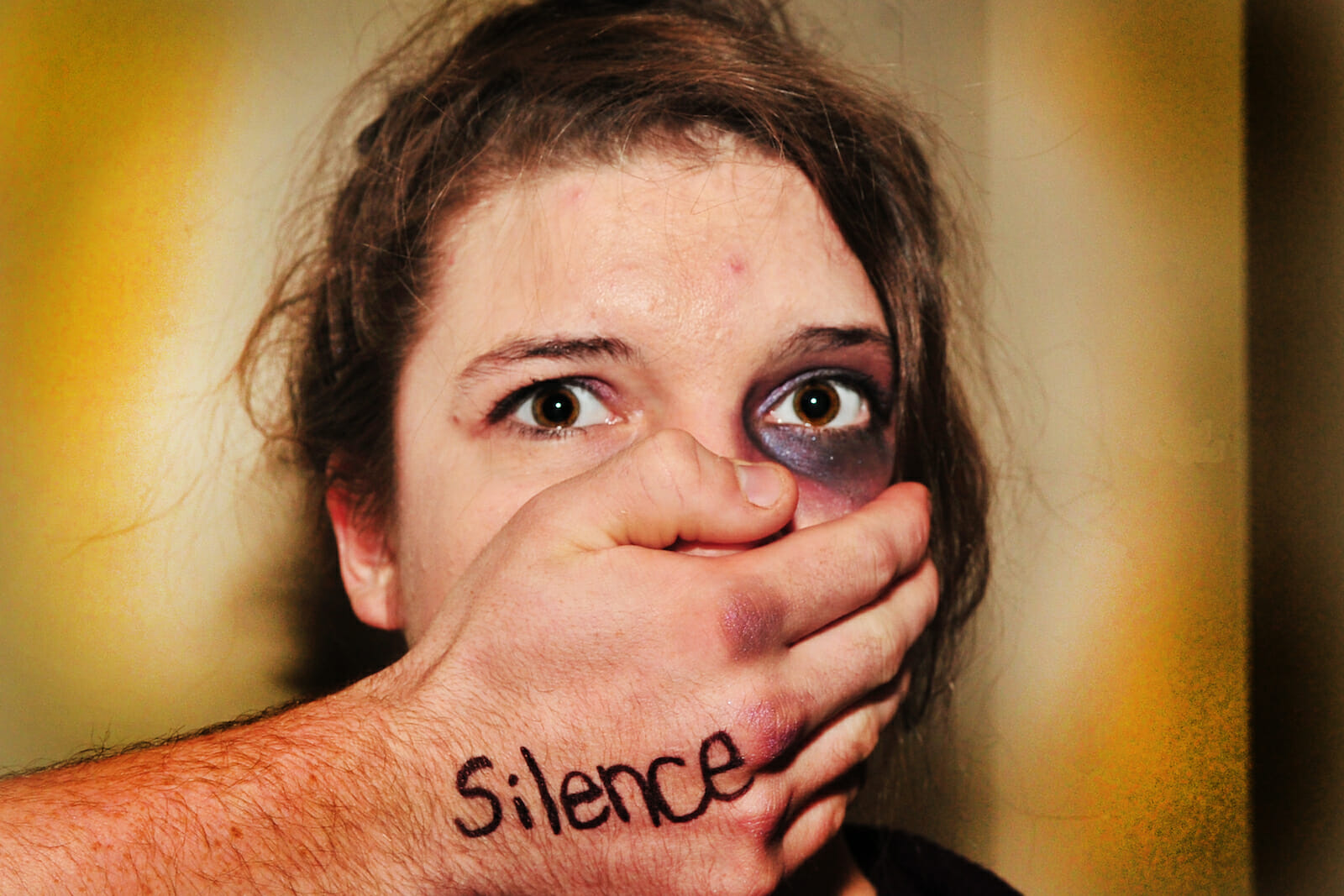
Culture
A Worldwide Crisis Begins at Home
Home is considered a safe haven for most people except for victims of domestic violence. Domestic violence refers to the abusive actions that occur between a married or unmarried couple. It is a pattern of behavior used to gain or maintain power and control over an intimate partner or family member. Domestic violence represents the most pervasive of human rights abuse in the United States that includes physical violence, threats, social and emotional abuse, harassment or stalking to control the behavior of the partner or former partner. Some other abusive behaviors are shoving, pushing, grabbing, pulling or forcing someone to do something against their will.
My personal experience with information I gathered during my 50 hours of domestic violence training through volunteer work for the Fairfax County Office for Women – Domestic Violence and Sexual Abuse educated and prepared me to advocate for and assist battered women in person and through the county’s hotline. Coming across a series of diverse violence cases helped me further understand the phenomenon of domestic violence.
Domestic violence affects people from all walks of life, no matter their gender, age, race, religion, ethnic, nor economic status. Despite the intimate nature of most relationships between couples, committing physical violence against someone is considered a felony. Unfortunately, very few people recognize themselves as abusers or victims because they may consider their experiences to be family disputes that just got out of control. The U.S. Department of Justice has estimated that one in four women, at some point in her life is a victim of domestic violence and this number could be doubled as it represents only the women who report abuse to the authorities.
As I was helping abused women through the county’s hot line it became obvious that physical violence is not the only form of domestic abuse. Domestic abusers use various forms and methods of violence to gain and maintain power to control their victims. They use intimidation, emotional abuse, isolation, minimizing, economic abuse, children, coercion and threats. The abuser makes and/or carries out threats to do something to hurt the victim if he or she does not comply.
Domestic Violence has long been both an issue and a concern of society. Violence against women has its roots in a patriarchal classification dating back to 753 B.C. All over ancient Rome and under the laws of Chastisement, wife beating by stick or belt was accepted by the authorities.
However, during the early 1500s, the laws changed to “The Rule of Thumb,” which meant that the husband was allowed to hit his wife with a stick no thicker than his thumb. Thus violent behavior against women is usually invisible in the public sphere. The thumb rule continued until it was rejected in 1874 when the Supreme Court of North Carolina determined that the husband has no right to penalize his wife under any circumstances. In 1882 Maryland became the first state to pass a law mandating that wife-beating was a crime and the husband could receive 40 lashes or serve one year jail time as a punishment.
Many men constantly struggle to gain power through controlling, whether it is at work, home, in sports or in a relationship. The social construction of a patriarchy that results in this thirst for control is due to the fear of being emasculated. Generally, this fear as manifested in the form of domestic violence diminishes their respect for women. In most cases they cannot even view women as human beings. Women, in their eyes, are property and should be used for their enjoyment and sex. Throughout history women have been abused and killed by their spouses.
In 1974, Minnesota opened the first shelter for victims of domestic violence that was authorized by the state. Although, it was a safe place for many victims, more than 70% of battered women were turned away due to the lack of space, food and basic necessities. As a result, the victims did not have a safe place to go where they could not be stalked by their abusers. All victims of domestic violence are not women nor are all batterers men. Before 1987, most victims were women, but according to a survey conducted in 1999 the number of men batterers decreased and the number of women batterers increased within 12 years.

In many instances, it is difficult to recognize the signs of domestic violence. There are no definitive characteristics that can be used to predict abusers or even their victims.
Those partners who lack power will be more inclined to physically abuse in order to gain power. The existence of disproportionate power within the relationship permits the batterer to recognize him or herself as dominating the other and then abusive behaviors become evident. As these power relationships polarize over time the dominated individual in the relationship becomes gradually dependent on the dominator. The victim is deeply obliged for a slight kindness displayed to him/her by the abuser, denies his/her own anger, and often sees the world from the abusers perspective.
The incident of domestic violence can greatly increase for women in relationships with men who abuse drugs and alcohol. Experts agree that there is a correlation between domestic violence and substance abuse behaviors; though, its precise nature remains unclear. The largest contributing factor to domestic violence is probably alcohol. All major theorists point to the excessive use of alcohol as a key element in the dynamics of woman beating. Nevertheless, it is not clear whether a man is violent because he is drunk or whether he drinks to decrease his inhibitions against his violent behavior.
Some women leave abusive relationship even without turning to the police or support organizations and many stay in their unhealthy abusive relationships which makes those women look like they are contributing to the suffering. In spite of all the resources made available to the victims, many victims choose to remain in the situation for an array of reasons. Commonly, abused victims stay in violent relationships because they fear their abusers, their fear stems from fear of losing custody of their children, losing financial support, and experiencing harassment by society. In the U.S. due to the current economic crisis, a major reason women stay in abusive relationship with their batterer is economic dependency, particularly when they have children. However, it may be easy for a confidant, independent, and strong-willed woman to leave an abusive relationship as opposed to a woman who is self-deprecating and dependent and may have had a childhood filled with obstacles which led to an insecure adult life.
There is no single pattern of response to domestic violence. Some victims report their abuse immediately while others hesitate or postpone their reaction. The failure of victims to report domestic abuse and crime to the police has been an obstacle for the justice system. Therefore, different strategies must be developed to challenge the criminal justice system to include the establishment of more safe havens for survivors of sexual and domestic violence. In an effort to comprehend the reasons for unrestrained domestic/ partner violence, we need to better conceptualize the acts between the abuser and the victims. On the individual and couple level, different theories that integrate more psychological, sociological and biological perspectives exist. Some theories attempt to understand domestic violence, while some others promote strategies to restore society’s partnership and family structure. The empowerment system is a great approach, however, women should not be the only ones who have to fight to prevent the situation and attempt to be in a peaceful relationship. It is the concern of both parties. Boys should be taught early to respect girls, and men should learn how to treat women as their equal partners. It takes two to clap, for a relationship to work; both parties need to participate equally. I think that most men are unable to overcome the historical subordination of behavior and continue to practice domination because it is a learned behavior to use their strength to control women. Yet, the notion of power and control can be altered, if power in used in a positive way to produce knowledge on how to abolish the phenomenon.
Domestic violence is both a national and a worldwide crisis. It is not only an individual’s problem but a problem for the community, society, and a nation with serious consequences for the victims, their families, and their workplaces. It is a major public health concern because it affects millions of people and often results in physical injuries or death. A serious effort has been made over the past few years to create a variety of resources, shelters, treatments and care in the United States for victims and the survivors of domestic violence. Hotlines are now available for victims throughout the United States. Victims can call the national hotline, toll-free; 24 hours. According to the National Domestic Violence Hotline, monthly 22,000 calls are received from victims. In the District of Columbia Metropolitan Area, in Northern Virginia community alone there are 55 shelters. The most active shelter, Artemis House Shelter is located in Fairfax County, Virginia. It is open 24 hours a day and is a county –sponsored shelter for battered women. It offers safe, confidential, emergency short-term residential services as well as supportive counseling to those who are experiencing physical violence from an intimate partner.
Further research and studies on the subject are required so that healthcare providers and law enforcement officers have a comprehensive and empathetic assessment of the victims of violence. Revealing the experiences of women victims of domestic violence will contribute to more public awareness. Additionally, the differing manifestations and the progression of violence will call attention to sloppy service practices and an inability to obtain precise evidence and accurate assessments by healthcare professionals and law enforcement officers when helping women victims and their families.
Violence is imbedded in the structure of society. Abuse is not just physical. Marriage and/or intimate relationship can be abusive without physical abuse and the victim can still develop the same scars. However, often such relationships escalate into physical abuse. Domestic violence is a widespread phenomenon, but it is not widely discussed as it must be with even elementary and middle school age children when they are at an age when they begin to develop their personality/identity and form their ideas of what a relationship is all about. I care and worry about the millennials because unfortunately, many of them have already witnessed domestic violence in the home and may think that this is what a normal intimate relationship looks like. It is not too late to teach our children that it is not normal to abuse or to be abused. They need to learn about both the visible and invisible types of abuse, and if they end up in abusive relationship, they should never feel obligated to remain.

